35 start with D start with D
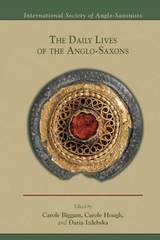
Insights into the lives of any group of historical people are provided by three main types of evidence: their language, their literature and their material culture. The contributors to this volume draw on all three types of evidence in order to present new research into the lives of the Anglo-Saxons. The particular focus is on daily life – the ordinary rather than the extraordinary, the normal rather than the exceptional. Rather than attempting an overview, the essays address individual scenarios in greater depth, but with an emphasis on shared experience.
The following scholars have contributed essays to this collection:
Martha Bayless
University of Oregon
Carole P. Biggam
University of Glasgow
Paul Cavill
University of Nottingham
Amy W. Clark
University of California, Berkeley
James Graham-Campbell
University College London
Antonina Harbus
Macquarie University, Sydney
Carole Hough
University of Glasgow
Daria Izdebska
Liverpool Hope University
Karen Louise Jolly
University of Hawai‘i at Mānoa
Alexandra Lester-Makin
University of Manchester
Elisabeth Okasha
University College, Cork
Phyllis Portnoy
University of Manitoba
Jane Roberts
University of London
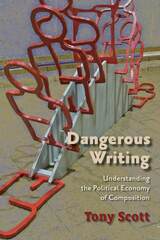
Since the 1980s and the “social turn” in composition studies and other disciplines, scholars in this field have conceived writing in college as explicitly embedded in socio-rhetorical situations beyond the classroom. From this conviction develops a commitment to teach writing with an emphasis on analyzing the social and political dimensions of rhetoric.
Ironically, though a leftist himself, Tony Scott’s analysis finds the academic left complicit with the forces in American culture that tend, in his view, to compromise education. By focusing on the structures of labor and of institutions that enforce those structures, Scott finds teachers and administrators are too easily swept along with the inertia of a hyper-commodified society in which students---especially working class students---are often positioned as commodities, themselves. Dangerous Writing, then, is a critique of the field as much as it is a critique of capitalism. Ultimately, Scott’s eye is on the institution and its structures, and it is these that he finds most in need of transformation.
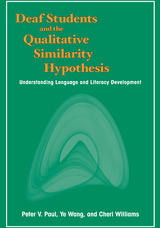
The difficulty that deaf and hard of hearing students have in attaining language and literacy skills has led to postulations that attribute their struggle to a developmental deficit. Recent research reveals, however, that deaf students acquire language structures, produce errors, and employ strategies in the same fashion as younger hearing students, though at later ages. The ability of all students to learn language and literacy skills in a similar manner at different stages forms the foundation of the Qualitative Similarity Hypothesis (QSH).
This volume describes the theoretical underpinnings and research findings of the QSH. It presents the educational implications for deaf and hard of hearing children and offers reason-based practices for improving their English language and literacy development. This collection also stresses the critical importance of exposing educators to the larger fields of literacy and second-language learning. Providing this background information expands the possibility of differentiating instruction to meet the needs of deaf students. Deaf Students and the Qualitative Similarity Hypothesis includes commentary on the QSH for both first- and second-language English learners and reflects on how the QSH can effect a better future for all language students.
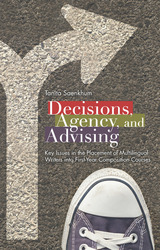
Tanita Saenkhum follows eleven multilingual students who made their decisions about placement into first-year composition courses during one academic year at a large public university. She identifies the need for the process of making placement decisions to be understood more clearly, describes how to use that knowledge to improve placement practices for these students—particularly in advising—and offers hands-on recommendations for writing programs.
Decisions, Agency, and Advising is a significant contribution to the field and particularly valuable to writing program administrators, academic advisors, writing teachers, researchers investigating second language writing and writing program administration, composition and second language writing scholars, and graduate students.
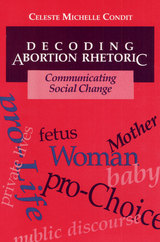
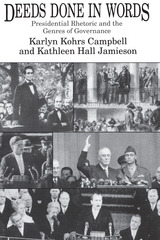
"Deeds Done in Words is a thoughtful survey of how a democracy uses language to transact its business. Based on an enlivened understanding of genre theory and on numerous pieces of original criticism, Campbell and Jamieson vividly show how central public discourse has become the lifeblood of the American polity."—Roderick Hart, author of The Sound of Leadership
"The rhetoric that issues from the White House is becoming an ever more salient part of what the presidency means and does. This acute inquiry provides a great many insights into the forms, meanings, and functions of presidential discourse. It is an enlightening contribution to our understanding of American politics."—Murray Edelman, author of Constructing the Political Spectacle
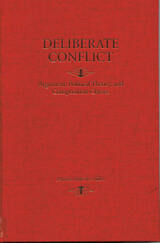
In Deliberate Conflict: Argument, Political Theory, and Composition Classes, Patricia Roberts-Miller argues that much current discourse about argument pedagogy is hampered by fundamental unspoken disagreements over what democratic public discourse should look like. The book’s pivotal question is, In what kind of public discourse do we want our students to engage? To answer this, the text provides a taxonomy, discussion, and evaluation of political theories that underpin democratic discourse, highlighting the relationship between various models of the public sphere and rhetorical theory.
Deliberate Conflict cogently advocates reintegrating instruction in argumentation with the composition curriculum. By linking effective argumentation in the public sphere with the ability to effect social change, Roberts-Miller pushes compositionists beyond a simplistic Aristotelian conception of how argumentation works and offers a means by which to prepare students for active participation in public discourse.
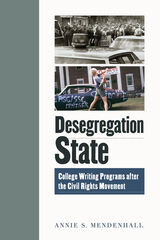
Formerly segregated state university systems crafted desegregation plans that gave them more control over policies for admissions, remediation, and retention. These plans created literacy requirements—admissions and graduation tests, remedial classes, and even writing centers and writing across the curriculum programs—that reshaped the landscape of college writing instruction and denied the demands of Black students, civil rights activists, and historically Black colleges and universities for major changes to university systems. This history details the profound influence of desegregation—and resistance to desegregation—on the ways that writing is taught and assessed in colleges today.
Desegregation State provides WPAs and writing teachers with a disciplinary history for understanding racism in writing assessment and writing programs. Mendenhall brings emerging scholarship on the racialization of institutions into the field, showing why writing studies must pay more attention to how writing programs have institutionalized racist literacy ideologies through arguments about student placement, individualized writing instruction, and writing assessment.
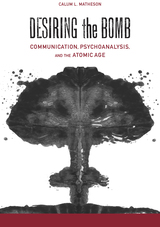
Every culture throughout history has obsessed over various “end of the world” scenarios. The dawn of the Atomic Age marked a new twist in this tale. For the first time, our species became aware of its capacity to deliberately destroy itself. Since that time the Bomb has served as an organizing metaphor, a symbol of human annihilation, a stand-in for the unspeakable void of extinction, and a discursive construct that challenges the limits of communication itself. The parallel fascination with and abhorrence of nuclear weapons has metastasized into a host of other end-of-the-world scenarios, from global pandemics and climate change to zombie uprisings and asteroid collisions.
Desiring the Bomb: Communication, Psychoanalysis, and the Atomic Age explores these world-ending fantasies through the lens of psychoanalysis to reveal their implications for both contemporary apocalyptic culture and the operations of language itself. What accounts for the enduring power of the Bomb as a symbol? What does the prospect of annihilation suggest about language and its limits? Thoroughly researched and accessibly written, this study expands on the theories of Kenneth Burke, Jacques Lacan, Sigmund Freud, and many others from a variety of disciplines to arrive at some answers to these questions.
Calum L. Matheson undertakes a series of case studies—including the Trinity test site, nuclear war games, urban shelter schemes, and contemporary survivalism—and argues that contending with the anxieties (individual, social, cultural, and political) born of the Atomic Age depends on rhetorical conceptions of the “real,” an order of experience that cannot be easily negotiated in language. Using aspects of media studies, rhetorical theory, and psychoanalysis, the author deftly engages the topics of Atomic Age survival, extinction, religion, and fantasy, along with their enduring cultural legacies, to develop an account of the Bomb as a signifier and to explore why some Americans have become fascinated with fantasies of nuclear warfare and narratives of postapocalyptic rebirth.
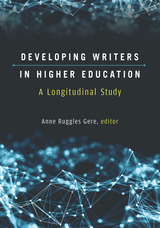
This volume draws on an in-depth study of the writing and experiences of 169 University of Michigan undergraduates, using statistical analysis of 322 surveys, qualitative analysis of 131 interviews, use of corpus linguistics on 94 electronic portfolios and 2,406 pieces of student writing, and case studies of individual students to trace the multiple paths taken by student writers. Topics include student writers’ interaction with feedback; perceptions of genre; the role of disciplinary writing; generality and certainty in student writing; students’ concepts of voice and style; students’ understanding of multimodal and digital writing; high school’s influence on college writers; and writing development after college. The digital edition offers samples of student writing, electronic portfolios produced by student writers, transcripts of interviews with students, and explanations of some of the analysis conducted by the contributors.
This is an important book for researchers and graduate students in multiple fields. Those in writing studies get an overview of other longitudinal studies as well as key questions currently circulating. For linguists, it demonstrates how corpus linguistics can inform writing studies. Scholars in higher education will gain a new perspective on college student development. The book also adds to current understandings of sociocultural theories of literacy and offers prospective teachers insights into how students learn to write. Finally, for high school teachers, this volume will answer questions about college writing.
Companion Website
Click here to access the Developing Writers project and its findings at the interactive companion website.
Project Data
Access the data from the project through this tutorial.
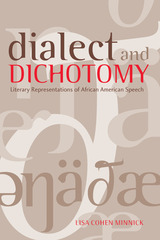
Applies linguistics methods for a richer understanding of literary texts and spoken language.
Dialect and Dichotomy outlines the history of dialect writing in English and its influence on linguistic variation. It also surveys American dialect writing and its relationship to literary, linguistic, political, and cultural trends, with emphasis on African American voices in literature.
Furthermore, this book introduces and critiques canonical works in literary dialect analysis and covers recent, innovative applications of linguistic analysis of literature. Next, it proposes theoretical principles and specific methods that can be implemented in order to analyze literary dialect for either linguistic or literary purposes, or both. Finally, the proposed methods are applied in four original analyses of African American speech as represented in major works of fiction of the American South—Mark Twain's Adventures of Huckleberry Finn, Charles W. Chesnutt's The Conjure Woman, William Faulkner's The Sound and the Fury, and Zora Neale Hurston's Their Eyes Were Watching God.
Dialect and Dichotomy is designed to be accessible to audiences with a variety of linguistic and literary backgrounds. It is an ideal research resource and course text for students and scholars interested in areas including American, African American, and southern literature and culture; linguistic applications to literature; language in the African American community; ethnicity and representation; literary dialect analysis and/or computational linguistics; dialect writing as genre; and American English.

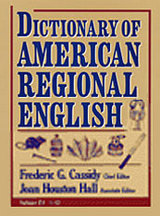
Dip into the Dictionary of American Regional English and enter the rich, endlessly entertaining, ever-changing world of American speech. Learn what a Minnesota grandma is making when she fixes lefse, what a counterman in a Buffalo deli means by kimmelweck or a Hawaiian baker puts into a malassada. Find out what kids on the streets of New York are doing when they play Johnny-on-the-pony or off-the-point, what Southerners do when they use their tom walkers, what the folks in Oklahoma and Texas celebrate on Juneteenth and those in some parts of Wisconsin at a kermis.
Like its enormously popular predecessors, this volume captures the language of our lives, from east to west, north to south, urban to rural, childhood to old age. Here are the terms that distinguish us, one from the other, and knit us together in one vast, colorful tapestry of imperfect, perfectly enchanting speech. More than five hundred maps show where you might be if you looked in a garden and saw moccasin flowers, indian cigars, or lady peas; if you encountered a bullfrog and cried, "jugarum!"; or came upon a hover fly and exclaimed, "newsbee!" And here, at long last, is an explanation of what the madstone and the money cat portend.
Built upon an unprecedented survey of spoken English across America and bolstered by extensive historical research, the Dictionary of American Regional English preserves a language that lives and dies as we breathe. It will amuse and inform, delight and instruct, and keep alive the speech that we have made our own, and that has made us who we are.

With this fifth volume of the Dictionary of American Regional English, readers now have the full panoply of American regional vocabulary, from Adam's housecat to Zydeco. Like the first four volumes, the fifth is filled with words that reflect our origins, migrations, ethnicities, and neighborhoods.
Contradicting the popular notion that American English has become homogenized, DARE demonstrates that our language still has distinct and delightful local character. If a person lives in a remote place, would you say he's from the boondocks? Or from the puckerbrush, the tules, or the willywags? Where are you likely to live if you eat Brunswick stew rather than jambalaya, stack cake, smearcase, or kringle? What's your likely background if your favorite card game is hasenpfeffer? bid whist? sheepshead? Whether we are talking about foods, games, clothing, family members, animals, or almost any other aspect of life, our vocabulary reveals much about who we are.
Each entry in DARE has been carefully researched to provide as complete a history of its life in America as possible. Illustrative citations extend from the seventeenth century through the twenty-first. More than 600 maps show where words were collected by the DARE fieldworkers. And quotations highlight the wit and wisdom of American speakers and writers. Recognized as the authoritative record of American English, DARE serves scholars and professionals of all stripes. It also holds treasures for readers who simply love our language.
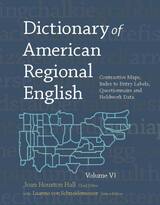
This companion volume to the Dictionary of American Regional English vastly enhances readers' use of the five volumes of DARE text. Those who want to investigate the regional synonyms for a rustic, or a submarine sandwich, or that strip of grass between the sidewalk and the street can search through the five volumes and compare the distributional maps. Or, with this volume, they can open to a page with all those maps displayed side by side. Not only is it an extraordinary teaching tool, it is also a browser's delight.
The user who wants to know what words characterize a given state or region is also in luck. The Index to the five volumes not only answers that question but also satisfies the reader's curiosity about words that have come into English from other languages, and words that vary with the speakers' age, sex, race, education, and community type.
And those who simply love to explore the variety and ingenuity of American expression will be seduced by the lists of answers to the DARE fieldwork questions. Dust balls under the bed? Americans have at least 176 names for them. Names for a heavy rainstorm? There are more than 200, including the fanciful frog-strangler, goose-drownder, lightwood-knot floater, and trash-mover. More than 400 questions and all of their answers are included in this treasure trove of American linguistic creativity.

Every page in this new volume of the Dictionary of American Regional English makes it wonderfully clear that regional expressions still flourish throughout the United States.
Depending on where you live, your conversation may include such beguiling terms as paddybass (North Carolina), pinkwink (Cape Cod), or scallyhoot (West); if you're invited to a potluck dinner, in Indiana you're likely to call it a pitch-in, while in northern Illinois it's a scramble; if your youngsters play hopscotch, they may call it potsy in Manhattan, but sky blue in Chicago.
Like the popular first three volumes of DARE, the fourth is a treasure-trove of linguistic gems, a book that invites exclamation, delight, and wonder. More than six hundred maps pinpoint where you might live if your favorite card games are sheepshead and skat; if you eat pan dulce rather than pain perdu; if you drive down a red dog road or make a purchase at a racket store; or if you look out your window and see a parka squirrel or a quill pig.
The language of our everyday lives is captured in DARE, along with expressions our grandparents used but our children will never know. Based on thousands of interviews across the country, the Dictionary of American Regional English presents our language in its infinite variety. Word lovers will delight in the wit and wisdom found in the quotations that illustrate each entry, and will prize the richness and diversity of our spoken and written culture.

Volume I of the Dictionary of American Regional English (DARE), published to wide acclaim in 1985, captured the wondrous variety and creativeness of American folk words and expressions and tickled the imagination of lovers of language around the world. Decades in preparation, the DARE corpus reflects the liveliness of English as it is spoken on America’s main streets and country roads—the regional metaphors and similes passed along within homes and communities.
Like its popular predecessor, Volume II is a treasury of vernacular Americanisms. In Virginia a goldfinch is a dandelion bird, in Missouri an insufficient rain shower a drizzle-fizzle. Gate was Louis Armstrong’s favorite sender (a verbal spur to a sidekick in a band), a usage that probably originated from the fact that gates swing. Readers will bedazzled by the wealth of entries—more than 11,000—contained in this second volume alone. The two and a half pages on “dirt” reveal that a small marble is a dirt pea in the South. To eat dried apples, a curious rural euphemism for becoming pregnant, appears in the five pages on “eat.” Seven pages on “horn” and related words take readers on a tour of the animal and nether worlds: horned lark, horned frog, horned pout (look that one up), and that horned fellow, the devil.
Initiated under the leadership of Frederic G. Cassidy, DARE represents an unprecedented attempt to document the living language of the entire country. The project’s primary tool was a carefully worded survey of 1,847 questions touching on most aspects of everyday life and human experience. Over a five-year period fieldworkers interviewed natives of 1,002 communities, a patchwork of the United States in all its diversity.
The result is a database of more than two and a half million items—a monument to the richness of American folk speech. Additionally, some 7,000 publications, including novels, diaries, and small-town newspapers, have yielded a bountiful harvest of local idioms. Computer-generated maps accompanying many of the entries illustrate the regional distribution of words and phrases.
The entries contained in Volume II—from the poetic and humorous to the witty and downright bawdy—will delight and inform readers.

How do Americans really talk—what are their hometown, everyday expressions in the many regions and sections of this huge country? The Dictionary of American Regional English (DARE), twenty years in preparation, answers these questions. It gives visible proof of the diversity—and the vitality—of American folk language, past and present.
DARE includes thousands of words and phrases not found in conventional dictionaries, and out-of-the-way meanings for common terms. Here are local names for familiar objects, from old cars to frying pans to dust-balls under the bed (176 names for these); for plants, animals, and critters real and imaginary; for rainstorms and heat waves; for foods, clothing, children’s games and adults’ pastimes; for illnesses and traditional remedies. Here are terms—salty, sarcastic, humorous—by which people describe each other, their physical appearance, characters, emotions, states of mind. Here are metaphors and similes galore.
In Wisconsin a man whose motives are suspect “has beans up his nose.” In Georgia a conceited person is “biggity”; someone important or self-important in the Northwest is “bull of the woods.” A close friend may be “bobbasheely” (Mississippi) or an “ace boon coon” (New York City). West of the Appalachians the old saw “I wouldn’t know him from Adam” becomes “I wouldn’t know him from Adam’s off-ox” (or, in the South, “from Adam’s housecat”). These and some twelve thousand other expressions are identified and explained in the first volume of DARE.
While DARE is the work of many dedicated people, it owes its existence to Frederic G. Cassidy, who in 1963 agreed to organize the project, raise funds for it, and serve as Editor-in-Chief. Cassidy trained teams of fieldworkers and equipped them with a carefully worded questionnaire: 1,847 questions grouped in 41 broad categories ranging over most aspects of everyday life and common human experience. From 1965 to 1970 the fieldworkers conducted week-long interviews with natives of 1,002 representative communities in all fifty states. The two and a half million items gleaned from the fieldwork, coded and computer-processed, are DARE’s primary data base, a rich harvest of regional Americanisms current in the seventh decade of this century. Earlier collections have been drawn upon as well, notably the 40,000 expressions recorded by the American Dialect Society since 1889; and some 5,000 publications, including regional novels and diaries and small-town newspapers, have been combed for local idioms.
A unique feature of the dictionary is the computer-generated maps that accompany many of the entries to show the geographical distribution of the term. The base map is schematic, distorting the areas of the states to reflect their population density.
Volume I includes extensive introductory material on DARE itself and on American folk speech. Its entries, from Aaron’s rod to czarnina, cover nearly a quarter of the total DARE corpus.

Originally offered in two separate volumes, A Dictionary of Iraqi Arabic, a staple of Georgetown University Press's world-renowned Arabic language program, now handily provides both the English to Arabic and Arabic to English texts in one volume. Designed for an English speaker learning Arabic, this is a key reference for anyone learning the colloquial speech of Iraq as spoken by educated people in Baghdad. Using romanized transliteration and transcription rather than the Arabic alphabet, it is further enhanced in most cases by having sentences to illustrate how individual word entries are used in context, reinforcing the user's acquisition of colloquial Iraqi.
DJs are models of rhetorical excellence; canon makers; time binders who link past, present, and future in the groove and mix; and intellectuals continuously interpreting the history and current realities of their communities in real time. Banks uses the DJ's practices of the mix, remix, and mixtape as tropes for reimagining writing instruction and the study of rhetoric. He combines many of the debates and tensions that mark black rhetorical traditions and points to ways for scholars and students to embrace those tensions rather than minimize them. This commitment to both honoring traditions and embracing futuristic visions makes this text unique, as do the sites of study included in the examination: mixtape culture, black theology as an activist movement, everyday narratives, and discussions of community engagement. Banks makes explicit these connections, rarely found in African American rhetoric scholarship, to illustrate how competing ideologies, vernacular and academic writing, sacred and secular texts, and oral, print, and digital literacies all must be brought together in the study of African American rhetoric and in the teaching of culturally relevant writing.
A remarkable addition to the study of African American rhetorical theory and composition studies, Digital Griots: African American Rhetoric in a Multimedia Age will compel scholars and students alike to think about what they know of African American rhetoric in fresh and useful ways.
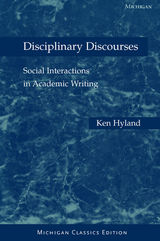
As issues of linguistic and rhetorical expression of disciplinary conventions are becoming more central to teachers, students, and researchers, the careful analysis and straightforward style of Disciplinary Discourses make it a remarkable asset.
The Michigan Classics Edition features a new preface by the author and a new foreword by John M. Swales.
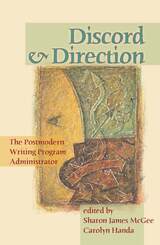
The argument of this collection is that the cultural and intellectual legacies of postmodernism impinge, significantly and daily, on the practice of the Writing Program Administrator. WPAs work in spaces where they must assume responsibility for a multifaceted program, a diverse curriculum, instructors with varying pedagogies and technological expertise—and where they must position their program in relation to a university with its own conflicted mission, and a state with its unpredictable views of accountability and assessment.
The collection further argues that postmodernism offers a useful lens through which to understand the work of WPAs and to examine the discordant cultural and institutional issues that shape their work. Each chapter tackles a problem local to its author’s writing program or experience as a WPA, and each responds to existing discord in creative ways that move toward rebuilding and redirection.
It is a given that accepting the role of WPA will land you squarely in the bind between modernism and postmodernism: while composition studies as a field arguably still reflects a modernist ethos, the WPA must grapple daily with postmodern habits of thought and ways of being. The effort to live in this role may or may not mean that a WPA will adopt a postmodern stance; it does mean, however, that being a WPA requires dealing with the postmodern.
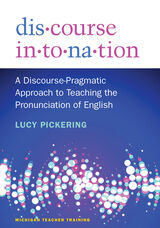
This textbook relies heavily on the Brazil model; chapters are organized around different parts of that model and how they can be most effectively taught. Readers will learn the conventions underlying, for example, how we group words in prosodic units, how we understand turn-taking cues in conversation, and how we assess whether someone is feeling angry or sad.
This text features Check Your Learning sections, discussion questions, and hands-on activities at the end of every chapter. Chapters 3-9 also include a section on pedagogical implications. Some of the example sentences that illustrate intonation have accompanying short audio (MP3) files, which can be found online at www.press.umich.edu/elt/compsite/DI.
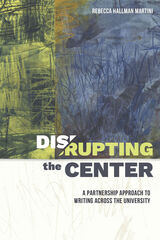
Using on-site research and critical ethnographic study from one university writing center, Rebecca Hallman Martini establishes an innovative, cross-disciplinary partnership approach to writing instruction in which peer tutoring plays an integral curricular role. Case studies detail three partnerships that respond directly to existing or potential disruptive innovations in higher education and showcase important concepts: mapping mutual benefit and stakeholder engagement in an online studio/hybrid first-year writing program partnership in response to online education, creating negotiated space to work through ethical issues involved when working with a public-private partnership to develop a required extracurricular portfolio project in a business school, and building transformational partnerships through establishing a writing-in-the-professions curriculum in the College of Engineering in response to career readiness initiatives.
Disrupting the Center uses interviews, observations, focus groups, analysis of consultations, meetings, and shared documents such as annual reports, budgets, assessment data, assignments, and syllabi to generate a wide view of how systems work. Writing centers are flexible university-wide service spaces where students go for one-on-one and group writing support that can become dynamic spaces for writing pedagogy by disrupting, revitalizing, and reinventing the epistemic foundations of current rhetoric and composition landscapes and traditional approaches to writing.

While US tenure-track writing center administrators (WCAs) do not make up the majority of those who hold WCA positions in writing centers, they are more likely to be the storytellers of the writing center grand narrative. They publish more, present more conference papers, edit more journals, and participate more in organizational leadership. This collection complicates that narrative by adding marginalized voices and experiences in three thematic categories: structural marginalization, globalization and marginalization, and embodied marginalization.
Disruptive Stories spurs further conversations about ways to improve the review process in writing center scholarship so that it more accurately reflects the growing diversity of its administrators and practitioners.
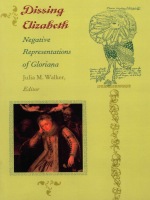
As editor Julia M. Walker suggests, the breadth of dissent considered in this collection points to a dark side of the Cult of Elizabeth. Reevaluating neglected texts that had not previously been perceived as critical of the queen or worthy of critical appraisal, contributors consider dissent in a variety of forms, including artwork representing (and mocking) the queen, erotic and pornographic metaphors for Elizabeth in the popular press, sermons subtly critiquing her actions, and even the hostility encoded in her epitaph and in the placement of her tomb. Other chapters discuss gossip about Elizabeth, effigies of the queen, polemics against her marriage to the Duke of Alençon, common verbal slander, violence against emblems of her authority, and the criticism embedded in the riddles, satires, and literature of the period.
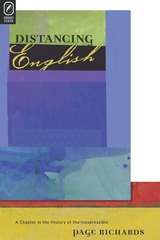
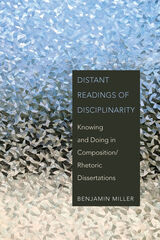
Writing studies has long been marked by a multitude of methods and interlocking purposes, partaking of not just humanities approaches but also social scientific ones, with data drawn from interviews and surveys alongside historical and philosophical arguments and with corpus analytics in large-scale collections jostling against small-scale case studies of individuals. These areas of study aren’t always cleanly separable; shifting modes mark the discipline as open and welcoming to many different angles of research. The field needs to embrace that vantage point and generate new degrees of familiarity with methods beyond those of any individual scholar.
Not only a training genre and not only a knowledge-making genre, the dissertation is also a discipline-producing genre. Illustrating what the field has been studying, and how, Distant Readings of Disciplinarity supports more fruitful collaborations within and across research areas and methods.
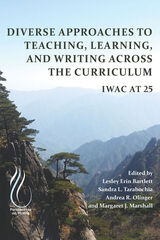
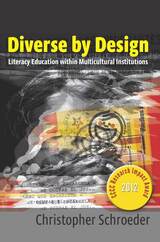
Diversity, despite what we say, disturbs us. In the U.S., we debate linguistic rights, the need for an official language, and educational policies for language minority students. On the one hand, we believe in the rights of individuals, including (at least in the academy) the right to one’s own language. On the other hand, we sponsor a single common language, monolingual and standard, for full participation and communication in both the academy and in U.S. society.
In Diverse by Design, Christopher Schroeder reports on an institutional case study conducted at an officially designated Hispanic-Serving Institution. He gives particular attention to a cohort of Latino students in a special admissions program, to document their experience of a program designed to help students surmount the “obstacle” that ethnolinguistic diversity is perceived to be.
Ultimately, Schroeder argues for reframing multilingualism and multiculturalism, not as obstacles, but as intellectual resources to exploit. While diversity might disturb us, we can overcome its challenges by a more expansive sense of social identity. In an increasingly globalized society, literacy ideologies are ever more critical to educational equity, and to human lives.
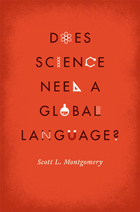
In Does Science Need a Global Language?, Scott L. Montgomery seeks to answer this question by investigating the phenomenon of global English in science, how and why it came about, the forms in which it appears, what advantages and disadvantages it brings, and what its future might be. He also examines the consequences of a global tongue, considering especially emerging and developing nations, where research is still at a relatively early stage and English is not yet firmly established.
Throughout the book, he includes important insights from a broad range of perspectives in linguistics, history, education, geopolitics, and more. Each chapter includes striking and revealing anecdotes from the front-line experiences of today’s scientists, some of whom have struggled with the reality of global scientific English. He explores topics such as student mobility, publication trends, world Englishes, language endangerment, and second language learning, among many others. What he uncovers will challenge readers to rethink their assumptions about the direction of contemporary science, as well as its future.
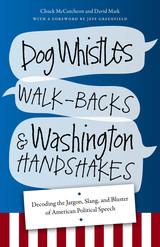
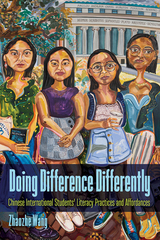
Doing Difference Differently provides an in-depth, nuanced understanding of the multifaceted literate lives of this often-marginalized cultural group, highlighting their diverse aspirations, personas, communities, challenges, and strategies. The book reconceptualizes the linguistic and cultural differences of Chinese international students as active processes of embracing, performing, resisting, negotiating, and redefining the identities that institutions impose on them through everyday literacy practices. Wang offers an analytical heuristic for researchers and educators to better understand these students’ backgrounds and to more effectively and ethically support and advocate for them. This case study critically engages broad and interconnected concepts that are essential to educators’ collective understanding of Generation Z students brought up in cultural and educational contexts outside of the European-American sphere.
This book appeals to scholars, researchers, teachers, and administrators working in North American higher education and English-speaking countries, particularly those in the fields of writing studies, second language studies, applied linguistics, multilingual education, literacy studies, and international education. Educators across disciplines seeking to better understand the growing population of Chinese international students in North America will likewise benefit.
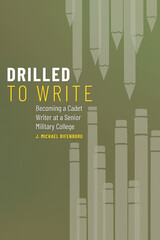
Drilled to Write offers a rich account of US Army cadets navigating the unique demands of Army writing at a senior military college. In this longitudinal case study, J. Michael Rifenburg follows one cadet, Logan Blackwell, for four years and traces how he conceptualizes Army writing and Army genres through immersion in military science classes, tactical exercises in the Appalachian Mountains, and specialized programs like Airborne School.
Drawing from research on rhetorical genre studies, writing transfer, and materiality, Drilled to Write speaks to scholars in writing studies committed to capturing how students understand their own writing development. Collectively, these chapters articulate four ways Blackwell leveraged resources through ROTC to become a cadet writer at this military college. Each chapter is dedicated to one year of his undergraduate experience with focus on curricular writing for his business management major and military science classes as well as his extracurricular writing, like his Ballroom Dance Club bylaws and a three-thousand-word short story.
In Drilled to Write, Rifenburg invites readers to see how cadets are positioned between civilian and military life—a curiously liminal space where they develop as writers. Using Army ROTC as an entry into genre theory and larger conversations about the role higher education plays in developing Army officers, he shows how writing students develop genre awareness and flexibility while forging a personal identity.
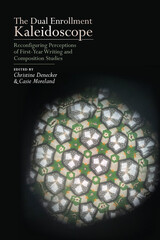
DE disrupts long-held beliefs of who should take and who should teach college writing. Giving higher education pause about the place of writing instruction within the academy, DE force those in the field to reflect upon the purposes and value of FYC and its pedagogical approaches. Featuring seventeen chapters written by a wide and diverse range of authors, this collection includes the voices of prominent scholars in rhetoric and composition at two- and four-year public and private institutions, as well as emerging scholars in the field. It also features a variety of methodologies, including archival research, quantitative and qualitative data collection, and autoethnography.
Few texts have been published on dual enrollment writing in rhetoric and composition studies. The Dual Enrollment Kaleidoscope should be mandatory reading for anyone interested in or tasked with doing the work of DE writing instruction, administration, mentoring, or assessment.
Contributors: Dominic Ashby, Anna Bogen, Tyler Branson, Melanie Burdick, Scott Campbell, Christine R. Farris, David Gehler, Leigh Graziano, Jane Greer, Jennifer Hadley, Jacquelyn Hoermann-Elliott, Joseph Jones, Nancy Knowles, Amy Lueck, Miles McCrimmon, Katie McWain, Annie S. Mendenhall, Keith Miller, Brice Nordquist, Cornelia Paraskevas, Jill Parrot, Shirley K Rose, Barbara Schneider, Erin Scott-Stewart
READERS
Browse our collection.
PUBLISHERS
See BiblioVault's publisher services.
STUDENT SERVICES
Files for college accessibility offices.
UChicago Accessibility Resources
home | accessibility | search | about | contact us
BiblioVault ® 2001 - 2024
The University of Chicago Press









